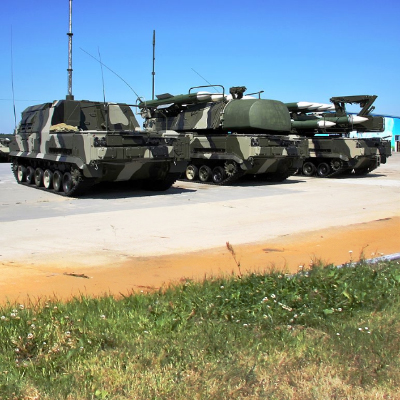Naval Shipbuilding Innovations: Designing the Warships of Tomorrow 25 June 2024

In the vast expanses of the world's oceans, a new era of naval warfare is on the horizon. Naval shipbuilding, once a domain of tradition-bound practices, is now undergoing a transformative phase. The warships of tomorrow are not just about bulk and firepower; they are the embodiment of cutting-edge technology, innovation, and strategic vision. With evolving threats and dynamic global security challenges, the focus has shifted toward designing agile, intelligent, and versatile vessels. Here, we delve into the world of naval shipbuilding innovations, exploring the technological breakthroughs that are defining the future of maritime defence.
The Paradigm Shift in Naval Shipbuilding
Gone are the days when naval warfare relied solely on sheer size and brute force. Modern naval shipbuilding is all about achieving a delicate balance between size, stealth, and capability. The emphasis is now on creating vessels that are not only powerful but also highly adaptable and responsive to evolving threats. This paradigm shift has led to the integration of advanced materials, smart systems, and modular designs, ensuring that warships can be quickly customized to meet specific mission requirements.
One of the key aspects of this transformation is the incorporation of stealth technology. Warships are now being designed with reduced radar cross-sections, making them less detectable to enemy surveillance systems. Advanced composite materials, such as carbon fiber-reinforced polymers, are being used to construct hulls that absorb and deflect radar waves, effectively rendering the vessels invisible to enemy radar.
Moreover, the integration of advanced propulsion systems has significantly enhanced the agility and speed of modern warships. From electric propulsion to hybrid systems, naval engineers are leveraging innovative technologies to improve maneuverability, increase operational range, and reduce fuel consumption. These advancements not only boost the overall performance of warships but also contribute to minimizing their environmental footprint.
Innovative Weapon Systems and Sensor Integration
The warships of tomorrow are not only equipped with state-of-the-art defence mechanisms but also possess an array of advanced weapon systems and sensor integration capabilities. The integration of directed energy weapons, such as high-energy lasers and electromagnetic railguns, is revolutionizing the concept of naval warfare. These weapons offer increased precision, rapid response times, and the ability to engage multiple targets simultaneously, thereby enhancing the overall defensive capabilities of modern warships.
Furthermore, the integration of unmanned systems, including autonomous drones and underwater vehicles, is reshaping the naval battlefield. These unmanned platforms serve as force multipliers, extending the operational reach of warships and enabling them to gather critical intelligence, conduct surveillance, and carry out targeted strikes with minimal risk to human personnel.
Sensor integration is another critical aspect of modern naval shipbuilding. Advanced sensor suites, comprising radar, sonar, and electro-optical systems, provide comprehensive situational awareness, enabling warships to detect and track potential threats across diverse environments. The fusion of data from multiple sensors facilitates real-time decision-making, allowing naval commanders to formulate effective strategies and respond promptly to emerging threats.
Adaptable and Future-Ready Designs
The dynamic nature of modern warfare demands warships that are not only equipped with the latest technologies but are also designed to accommodate future upgrades and modifications. As a result, naval shipbuilders are increasingly focusing on developing modular and scalable designs that can easily integrate new systems and technologies as they become available. This approach ensures that warships remain relevant and effective in the face of rapidly evolving threats and changing operational requirements.
Warships today are embracing a new level of adaptability through modular design. These vessels are now equipped with interchangeable mission modules, allowing them to swiftly transition between various operational roles such as anti-submarine warfare, mine countermeasures, and humanitarian aid. This modular strategy enhances their versatility, enabling them to handle diverse missions without requiring significant overhauls or costly reconfigurations.
Additionally, the emphasis on sustainability and reduced life-cycle costs has driven the integration of energy-efficient technologies and environmentally friendly materials in naval shipbuilding. From energy-recycling systems to the use of bio-based composite materials, the focus is on minimizing the environmental impact of warships while optimizing their long-term operational efficiency.
Collaborative Research and Development
The pursuit of naval shipbuilding innovations is not confined to individual nations or defence contractors; it is a collaborative endeavor that involves extensive research and development efforts across international boundaries. Collaborative initiatives foster the exchange of knowledge, expertise, and technological advancements, leading to the accelerated development of cutting-edge naval technologies and fostering a shared understanding of global security challenges.
International collaborations not only promote technological advancements but also contribute to strengthening diplomatic ties and fostering mutual trust among participating nations. Joint research and development programs facilitate the sharing of resources, infrastructure, and intellectual capital, creating a conducive environment for the rapid prototyping and testing of innovative naval technologies.
The Road Ahead: Challenges and Opportunities
While the advancements in naval shipbuilding are indeed promising, the journey towards designing the warships of tomorrow is not without its challenges. The integration of complex technologies, stringent regulatory requirements, and the need to ensure interoperability with allied naval forces present formidable hurdles that demand continuous innovation and strategic planning.
Furthermore, the increasing prevalence of asymmetric threats, including cyber-attacks and
unconventional warfare tactics, necessitates the development of robust cybersecurity measures and resilient defence mechanisms to safeguard warships from potential vulnerabilities and disruptions.
Despite these challenges, the future of naval shipbuilding holds tremendous promise. The ongoing advancements in artificial intelligence, data analytics, and quantum computing are expected to further revolutionize the capabilities of modern warships, enabling them to anticipate threats, adapt to dynamic environments, and operate with unparalleled efficiency and precision.
In conclusion, the evolution of naval shipbuilding is not just about constructing warships; it is about reimagining the role of maritime defence in an increasingly complex and interconnected world. By embracing technological innovations, fostering collaborative research and development, and prioritizing adaptability and sustainability, the global naval community can collectively pave the way for a safer and more secure maritime future, where the warships of tomorrow stand as formidable guardians of peace and stability on the high seas.








